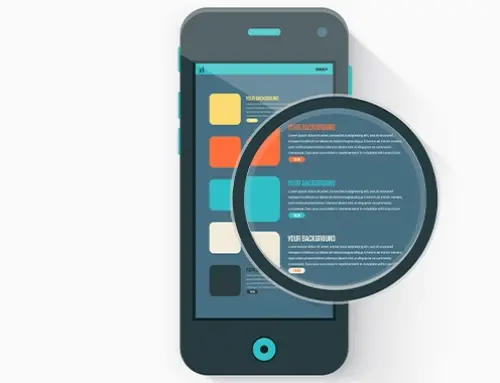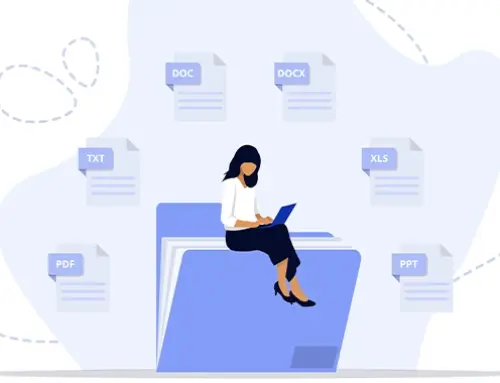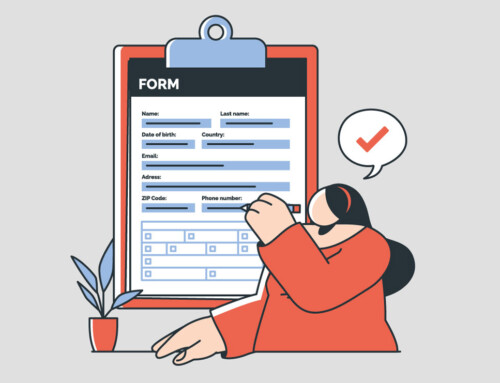Contents
Navigating the Client Intake Process: A Checklist of Dos and Don’ts
The client intake process is one of the most critical stages in establishing a successful relationship between a law firm and its clients. It sets the tone for future interactions and plays a pivotal role in gathering essential information, ensuring client satisfaction, and maintaining a smooth workflow within the firm. However, this process can be fraught with potential pitfalls if not handled correctly. To help you navigate this crucial stage, here is a checklist of dos and don’ts for the client intake process.
Do: Pre-screen Your Clients
Pre-screening clients is a crucial step in the client intake process. It allows you to evaluate potential clients and ensure that their cases align with your expertise, resources, and the goals of your practice. By pre-screening clients, you can determine if their legal needs fit your practice area and if you are the right fit to represent them. This step helps save time, reduces the likelihood of taking on cases that may not be viable, and ensures that you can dedicate your resources to clients who truly need and can benefit from your services.
Do: Prioritize a Warm and Professional First Impression
The first impression your firm makes is often the deciding factor in whether a potential client chooses to engage your services. This initial interaction sets the tone for the entire client relationship, making it crucial to prioritize a warm and professional demeanor right from the start. Whether the first point of contact is a receptionist, intake specialist, or attorney, it’s essential that they approach the conversation with warmth, courtesy, and attentiveness. Using the client’s name throughout the interaction helps to establish a personal connection, while active listening demonstrates that you genuinely care about their concerns. Expressing empathy for their situation, whether it’s a complex legal issue or a personal challenge, further reassures the client that they are in capable and compassionate hands. A strong first impression not only fosters trust and comfort but also reinforces your firm’s reputation for professionalism and client-centered service. By making clients feel welcomed and respected from the very first interaction, you lay the groundwork for a positive and productive relationship.
Do: Establish Clear Communication Channels
Ensuring that clients have multiple ways to contact your firm is crucial for creating a positive experience from the outset. Providing options such as phone, email, online forms, and even live chat ensures that clients can reach out in a manner that suits their preferences and needs. Make sure your communication channels are not only accessible but also user-friendly. Clear instructions on your website, professional voicemail greetings, and personalized email responses can all contribute to a seamless communication experience, ultimately leading to higher client satisfaction.

Do: Provide a Welcoming Environment
Creating a welcoming environment during the intake process is vital for establishing a positive relationship with your clients from the very beginning. Whether the interaction is virtual or in-person, the atmosphere you create can significantly impact how clients perceive your firm and their overall comfort level in sharing personal and sensitive information. Your demeanor throughout the intake process is crucial. A welcoming tone, active listening, and an approachable manner make clients feel valued and respected. Show empathy and understanding, particularly when discussing sensitive matters, and take the time to reassure clients that they are in good hands. By creating a comfortable and welcoming environment, you not only set the stage for a positive client relationship but also build trust and confidence, making clients more likely to engage with your firm and share the necessary details of their case openly.
Do: Gather Comprehensive Information
Ask detailed questions to gather all relevant information about the client’s case. This helps in assessing the case’s viability and ensures nothing critical is overlooked. Additionally, take the time to clarify any ambiguities and ask follow-up questions as needed. This not only ensures that you don’t miss critical details but also demonstrates to the client that you are thorough and committed to their case. Comprehensive information gathering also aids in identifying any potential legal issues early on, allowing for more informed decision-making and better preparation for any challenges that may arise.
Ensure that all gathered information is documented and organized efficiently, using case management software or secure digital storage solutions. This allows you and your team to access and review the information easily throughout the case, minimizing the risk of overlooking important details and enhancing the overall effectiveness of your legal services.
Do: Clarify Expectations Early
Clarifying expectations early in the client intake process is essential for building a transparent and trusting relationship. When you clearly explain your services, fees, and the expected timeline for their case from the outset, you establish a strong foundation for effective communication. This proactive approach not only helps manage client expectations but also prevents potential misunderstandings that could arise later. Clients are more likely to feel confident and informed when they understand the scope of your work, the associated costs, and the anticipated timeframes, leading to a smoother and more successful collaboration.
Do: Use a Comprehensive Intake Form
A well-designed intake form helps gather all the necessary details about the client’s case, minimizing the risk of errors or omissions that could affect case management later on. To do this, customize your intake form to cover critical aspects such as personal details, case history, desired outcomes, and any immediate concerns. Make sure the form is easy to understand and fill out, whether completed in person or online.
Do: Address Confidentiality and Privacy Concerns
Clients need to feel confident that their information is secure and that their privacy will be respected throughout the legal process. It’s crucial to clearly explain how your firm handles confidentiality and data protection right from the start. Outline the specific measures your firm takes to safeguard personal and case-related information, including data encryption, secure storage, and restricted access protocols. This not only reassures clients that their sensitive information is in safe hands but also demonstrates your commitment to ethical practices. Additionally, invite clients to discuss any specific privacy concerns they may have, and address these issues with transparency and care. By doing so, you build trust and reinforce the client’s confidence in your ability to handle their case with the utmost professionalism and discretion.
Do: Follow Up
Following up after the initial intake is a critical step in demonstrating your firm’s commitment to the client and ensuring that the case progresses smoothly. A well-timed follow-up shows clients that you value their case and are attentive to their needs. Implement a system that facilitates timely follow-up actions, whether it’s through a phone call, email, or even an in-person meeting. This follow-up should not only serve as a check-in but also as an opportunity to address any questions or concerns that may have arisen since the initial consultation. Additionally, use this time to clearly outline the next steps in the process, providing the client with a roadmap of what to expect moving forward. This proactive approach helps maintain client engagement, reinforces trust, and keeps the momentum of the case on track.
Do: Leverage Technology for Efficiency
Leveraging technology in the client intake process can significantly enhance efficiency, improve accuracy, and elevate the overall client experience. By incorporating client intake software, you can automate various tasks such as data entry, document management, and communication, which not only reduces the administrative burden on your staff but also minimizes the risk of errors. Automation allows you to capture and organize client information quickly and accurately, ensuring that nothing falls through the cracks. Moreover, technology can facilitate smoother communication, with features like automated follow-ups, reminders, and secure messaging, all contributing to a more seamless and professional client experience. Embracing these tools modernizes your practice and demonstrates to clients that your firm is committed to providing high-quality, efficient service.
Do: Track Your Data
By systematically recording and analyzing data related to client inquiries, case types, and conversion rates, you can gain valuable insights into your practice’s performance and client demographics. This data helps identify trends, measure the effectiveness of your marketing strategies, and optimize your intake procedures. Additionally, tracking data allows you to make informed decisions, improve client satisfaction, and ultimately increase your firm’s efficiency and profitability. Consistent data tracking is key to understanding your firm’s strengths and areas for improvement.
Do: Offer E-signature
Offering e-signature options is a smart and efficient practice in the client intake process. E-signatures provide a convenient and secure way for clients to sign documents without the need for in-person meetings or physical paperwork. This not only speeds up the intake process but also enhances the overall client experience by making it easier and more accessible for them to complete necessary forms and agreements. E-signatures are legally binding and secure, with many platforms offering encryption and audit trails to ensure the authenticity and integrity of the signed documents. This provides peace of mind for both you and your clients, knowing that their information is protected and that the signatures are valid.
Don’t: Rush the Intake Process
While efficiency is important, rushing through the intake process can lead to missed details, misunderstandings, and a lack of trust. The intake process is your first opportunity to build a strong rapport with potential clients, and a hurried approach can make them feel undervalued or unsure about your commitment to their case. Taking the time to thoroughly discuss the client’s needs, expectations, and case specifics is crucial. This careful approach not only helps in gathering all necessary information but also allows you to assess the client’s situation accurately and offer informed legal advice.
Don’t: Overwhelm the Client with Jargon
Overwhelming clients with legal jargon can lead to confusion and intimidation, making them feel alienated and disconnected from the legal process. When clients don’t understand the language being used, they may become anxious or uncertain, which can erode their confidence in your firm. It’s essential to communicate in plain, straightforward language, especially during the initial intake process. Break down complex legal concepts into simple terms and take the time to explain anything that might be unclear. Regularly check in with clients to ensure they fully understand the information being provided and encourage them to ask questions if something isn’t clear. This approach not only makes the client feel more comfortable and informed but also helps to build trust. When clients feel empowered with knowledge, they are more likely to engage actively in their case and feel confident in the decisions being made on their behalf. By avoiding excessive jargon and prioritizing clear communication, you foster a more positive and collaborative attorney-client relationship.
Don’t: Make Promises You Can’t Keep
Making promises you can’t keep is one of the quickest ways to damage your firm’s reputation and erode client trust. Overpromising results or timelines might seem appealing at the moment, but it often leads to client dissatisfaction when expectations aren’t fulfilled. Instead, it’s crucial to be honest and realistic about what your firm can achieve and the potential outcomes of the case. Transparency about the challenges and uncertainties involved in a legal matter not only sets the right expectations but also positions your firm as trustworthy and credible. Clients appreciate candor and are more likely to respect your advice when you present a balanced view of their case. Keep in mind that it’s far better to underpromise and overdeliver than to set unrealistic expectations that you cannot meet. This perspective verifies that clients are pleasantly surprised when things go well, rather than disappointed when they don’t go as anticipated.
Don’t: Delay Responses
Delaying responses to client inquiries, whether from potential clients or current ones, can significantly undermine your firm’s credibility and the trust clients place in you. Prompt communication is a clear indicator that your firm values the client’s time, concerns, and the importance of their case. Whether a client is asking a simple question or seeking an update on their case, a timely response reassures them that they are a priority and that their issues are being actively managed. Consistent and prompt communication sets the tone for a professional and responsive relationship, helping to build and maintain trust. It also prevents potential frustrations that can arise when clients feel ignored or undervalued. In a field where every detail counts, timely responses are not just a courtesy—they’re a fundamental part of delivering excellent client service and fostering long-term relationships.
Don’t: Forget to Personalize the Experience
Forgetting to personalize the client experience can make clients feel like just another case number, potentially leading to dissatisfaction and a weakened relationship. Every client is unique, with their own set of concerns, preferences, and expectations. Taking the time to tailor your communication and services to their specific needs not only makes them feel valued but also shows that your firm is committed to understanding and addressing their individual circumstances. Personalization might involve adjusting your communication style to match the client’s preferences, acknowledging any particular sensitivities they have, or offering solutions that are specifically tailored to their situation. By recognizing and addressing these unique aspects throughout the intake process, you create a more engaging and supportive experience for the client, which can significantly enhance their trust and satisfaction with your firm. A personalized approach demonstrates that your firm sees each client as an individual, not just another case, and is dedicated to delivering them with the best possible service.
Don’t: Overlook Red Flags
Any potential red flags during the intake process can be indicators of future challenges in the attorney-client relationship so that they are required to be considered. Red flags might include unrealistic expectations about case outcomes, reluctance to provide essential details, or a history of frequently changing legal representation. Clients who are unwilling to be transparent or who have overly optimistic expectations may pose difficulties down the line, potentially leading to misunderstandings, disputes, or dissatisfaction with your services.
Don’t: Neglect Documentation
Neglecting to document all client interactions and information collected during the intake process can lead to serious complications as the case progresses. Inadequate documentation can lead to miscommunication, misunderstandings, and even potential legal disputes if critical details are forgotten or misinterpreted. Every piece of information gathered during the intake process, from initial consultations to follow-up conversations, should be meticulously recorded. This thorough documentation is not merely a best practice but an essential part of maintaining accuracy, accountability, and clarity throughout the attorney-client relationship. Comprehensive records ensure that you and your team have a clear, consistent reference point, which helps in avoiding any discrepancies that could harm the case or the client relationship. Also, keeping detailed records of interactions serves as a strong safeguard if any disputes or claims arise, helping to protect both your law firm and your client’s interests.
Don’t: Promise Outcomes
Avoid guaranteeing specific outcomes or making promises that you can’t be sure to keep during the client intake process. While it can be tempting to reassure clients with optimistic predictions, especially when they are anxious or uncertain about their legal situation, making promises you can’t guarantee can result in serious issues later on. Legal matters are inherently unpredictable, with many factors that can influence the final result, and overpromising can damage your credibility and the trust clients have in you.
Don’t: Avoid Discussing Fees Upfront
One of the most crucial aspects of the client intake process is having a clear and open conversation about fees right from the start. Avoiding this discussion can lead to confusion, misunderstandings, and potential conflicts later in the attorney-client relationship. Clients need to know what to expect in terms of costs, payment structures, and any potential additional fees that may arise during the course of their case.
By discussing fees upfront, you secure that there are no surprises for the client down the road. This transparency helps build trust and sets the tone for a professional relationship based on clear communication and mutual understanding. It also grants clients the opportunity to ask questions and express any concerns they may have about the financial aspects of your services, allowing you to address these issues promptly.
Moreover, an early conversation about fees helps to screen clients who may not be a good financial fit for your services. It’s better to identify and resolve any discrepancies in expectations before you invest significant time and resources into a case. This approach also helps you to maintain the financial health of your practice by ensuring that you work with clients who understand and are comfortable with your fee structure.
Don’t: Waste Time on Repetitive Data Entry
Manually entering the same information across multiple forms, documents, or systems not only wastes valuable time but also increases the risk of errors, which can bring about costly mistakes and inefficiencies later. In a busy legal practice, every minute counts, and dedicating too much time to redundant tasks can hinder your ability to focus on more critical aspects of your work, such as client communication, case strategy, and legal research. To avoid getting bogged down by repetitive data entry, consider implementing technology solutions that streamline this process. Legal practice management software can help you enter client information once and have it populated across all necessary documents and platforms. This not only saves time but also pledges consistency and accuracy in your data. Embracing automation and reducing repetitive data entry not only enhances productivity but also improves overall client satisfaction. It allows you to deliver faster, more accurate services while focusing on the tasks that truly require your expertise and attention.
Streamlining Your Client Intake Process with RunSensible
Incorporating RunSensible functions into the client intake process can significantly enhance both efficiency and client satisfaction. With RunSensible, you can streamline the intake process by automating repetitive tasks, such as data entry and follow-ups, ensuring that critical information is captured accurately and consistently. RunSensible’s customizable workflows allow you to tailor the intake process to your firm’s specific needs, from pre-screening clients to gathering comprehensive case details while maintaining a seamless communication flow. Additionally, by utilizing RunSensible’s e-signature capabilities, you can expedite the intake process, allowing clients to sign documents securely and conveniently from anywhere, reducing delays and improving overall client experience. This technology not only enhances operational efficiency but also demonstrates your firm’s unwavering commitment to leveraging modern tools for superior client service.
Disclaimer: The content provided on this blog is for informational purposes only and does not constitute legal, financial, or professional advice.







